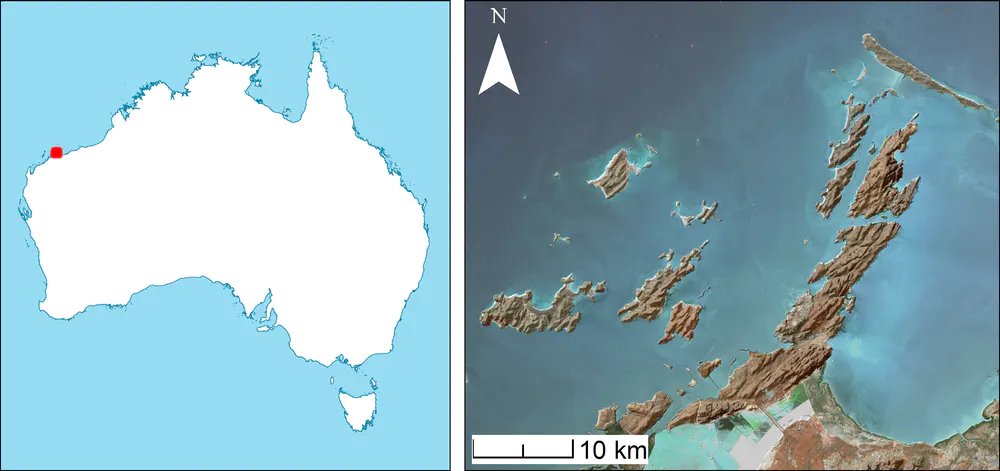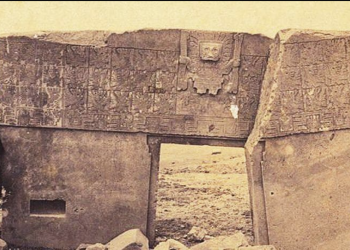A multidisciplinary team of scientists discovered two ancient aboriginal sites off the coast of Australia, sunken at a depth of 2.4 and 14 meters. These sites were above the surface 7,000 and 8,500 years ago, respectively. Divers have recovered a series of artifacts from the sites.
During most of human history, the sea level was much lower than today, which means that many parts of the planet were above the ocean, once inhabited by ancient cultures. The more we research the seabed, the more we explore. These explanations have yielded several discoveries of great importance in the past and continue to do so today. Archaeologists have recently uncovered the first underwater aboriginal sites in northwestern Australia, which were found to date back 7,000 and 8,500 years ago.
First humans in Australia?
According to experts, when humans first came to Australia around 65,000 years ago, the ocean level was about 80 meters lower than it is today. As time passed, the ocean level continued to fluctuate as the global climate cooled. At the peak of the last ice age, around 20,000 years ago, the planet changed dramatically. During this time, it is believed that our planet’s oceans dropped to around 130 meters below what they are today.
Climate change and more
Later, between 18,000 and 8,000 years ago, the planet warmed up. Our planet’s extensive ice sheets melted, and the levels of the seas rose. This destroyed many sites that were above the surface once. Tasmania separated from the continent around 11,000 years ago, followed by New Guinea about 3,000 years later. Although we are now focusing on Australia in this article, as the sea level rose, many sites worldwide were devoured by the ocean.
A story worthy of Atlantis
During this time, it is assumed that waters flooded more than 2 million square kilometers of the continental shelf around Australia, and thousands of generations of people who once lived in those lands were eventually forced to migrate. Consequently, many parts above the ocean ended up being flooded, buried beneath the ocean, hidden from sight.

Image Credit: Copernicus Sentinel Data and Geoscience Australia.
Underwater sites off the Pilbara coast
Over the past four years, a group of experts team, featuring archaeologists, geologists, pilots, and divers, partnered with the Murujuga Aboriginal Corporation to find and examine underwater sites off the Pilbara coast in Western Australia. The scientists analyzed navigational charts and studied geological maps and archaeological sites located on land, which allowed them to reduce the areas of exploration. They then delved into researching the seabed using scanners mounted on small planes and high-resolution sonars attached to ships,
In the final phase of the investigation, divers were sent to explore the sites physically and record their discoveries. This phase saw divers take samples from the seabed and photograph the sites. As a result, the researchers stumbled across two archaeological sites in the Dampier archipelago. The first sunken site is located at Cape Bruguieres and comprises hundreds of stone artifacts – including mortars and whetstone. This site was found at only 2.4 meters beneath the surface. The different studies on the samples indicate that this site is at least 7,000 years old.
Flying Foam Passage
The second site was located at Flying Foam Passage, and it includes what scientists believe are ancient cutting tools and an underwater freshwater spring. The discovery was made at a depth of around 14 meters. This site is estimated to be at least 8,500 years old. Although exciting, the scientific team warned that the underwater archaeological sites that were recently located are at risk of destruction both due to erosion and human activities, including oil and gas plants, the construction of underwater pipelines, and the development of ports, dredging, as well as industrial fishing.
Protection of underwater sites
“The protection of underwater sites of cultural interest over 100 years old are enshrined in the UNESCO Convention for the Protection of Underwater Cultural Heritage (2001), adopted by the law of more than 60 countries but not ratified by Australia,” reveal researchers.
However, although federal laws protecting archaeological finds in Commonwealth waters have recently been modernized in Australia, they are far from perfect in what is known as the Underwater Cultural Heritage Act (2018). They cannot protect all archeological sites and fail to categorize them adequately. The above-mentioned act fails to automatically protect all sites, giving privileges to non-indigenous heritage – such as shipwrecks.
Aboriginal sites can only be protected when there is ministerial approval, one of the greatest issues concerning protecting historically important sites in Australia. Not long ago, it was revealed that a mining company destroyed an aboriginal site in Australia. This is an obvious example of the poor job authorities in Australia are doing to protect historical sites.
Join the discussion and participate in awesome giveaways in our mobile Telegram group. Join Curiosmos on Telegram Today. t.me/Curiosmos











